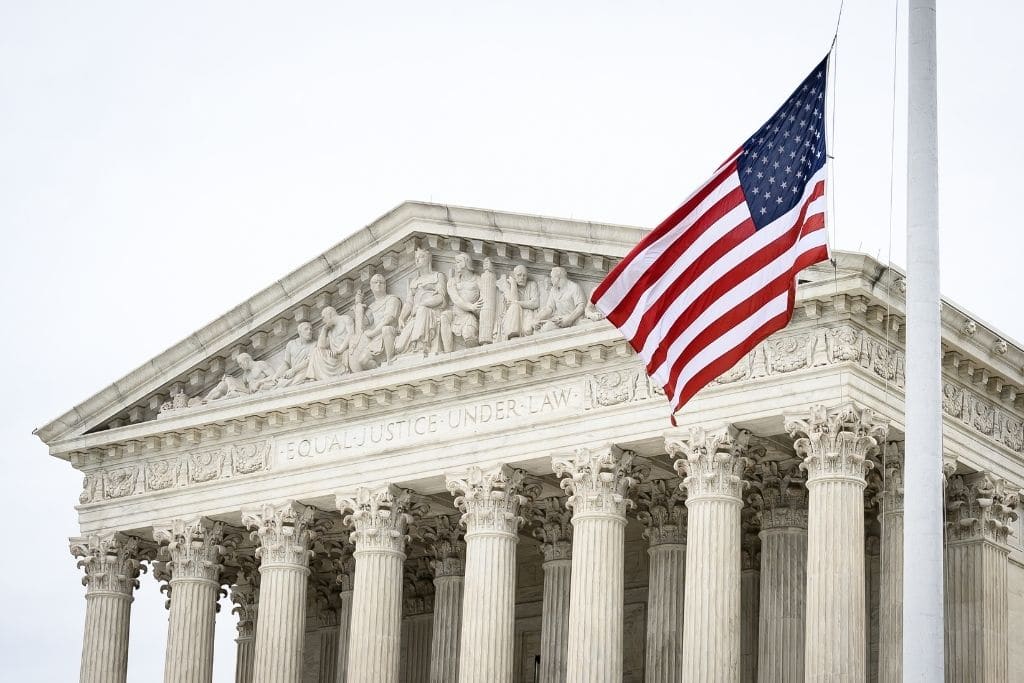Supreme Court Allows Biden Administration to Implement EPA Climate Regulations for Power Plants
3 min read
The US Supreme Court in Washington, DC. Drew Angerer/AFP/Getty Images

The US Supreme Court in Washington, DC. Drew Angerer/AFP/Getty Images
In a surprising turn of events, the Supreme Court ruled on Wednesday to permit the Biden administration’s Environmental Protection Agency (EPA) to temporarily enforce new regulations aimed at reducing planet-warming emissions from power plants. This decision comes despite an emergency request from over 20 Republican state attorneys general and various industry groups seeking to block the enforcement of these rules while a legal challenge is ongoing.
The new EPA regulations require existing coal-fired power plants and new natural gas facilities to either significantly reduce or capture 90% of their greenhouse gas emissions by 2032. These measures are projected to decrease carbon dioxide emissions from the power sector by 75% compared to peak levels recorded in 2005.
Justices Brett Kavanaugh and Neil Gorsuch acknowledged in a brief statement that the states and industry groups had demonstrated a strong likelihood of success with some of their legal challenges. However, Kavanaugh noted that since the new regulations do not necessitate any immediate action until next year, there was no urgency to grant the request for a halt at this time. Conservative Justice Clarence Thomas indicated he would have supported the request, while Justice Samuel Alito recused himself from the proceedings.
This ruling is part of a recent trend of favorable outcomes for the EPA, particularly on the court’s emergency docket. Earlier in the month, the Supreme Court upheld Biden administration regulations aimed at reducing emissions of methane and mercury without dissent.
The challengers to the new EPA rules have expressed concerns about the financial implications for power plants, arguing that the regulations could lead to closures. They contend that the EPA’s reliance on what they termed “inadequately demonstrated technologies” within unworkable timeframes effectively forces plants toward retirement.
The Supreme Court’s 2022 ruling had limited the EPA’s ability to regulate emissions from power plants but did not eliminate the agency’s authority altogether. In developing the recent regulations, finalized earlier this spring, the EPA sought to closely align its proposals with existing law, anticipating potential legal challenges.
In a recent interview with CNN, EPA Administrator Michael Regan emphasized that the agency “took to heart” the 2022 ruling that restricted its powers. He also clarified that the new regulations differ significantly from the Obama-era Clean Power Plan, which was struck down by the Supreme Court. “We’re looking at something completely different that’s on the right side of the law,” Regan stated, adding that the agency took its time to formulate a rule in anticipation of a skeptical judicial environment.
Following the Supreme Court’s decision against the Obama-era rules in 2022, the EPA’s latest regulations provide power generators with flexibility in how they meet pollution standards. The Biden administration’s proposal encourages utilities to implement expensive carbon capture technologies or incorporate clean hydrogen fuel to reduce emissions. To ease the financial burden of these technologies, the rules are accompanied by substantial tax incentives under Biden’s climate legislation.
Despite these efforts, Republican attorneys general and industry representatives argue that the new regulations impose prohibitive costs on power plants. “Our position remains the same: this rule strips the states of important discretion while using technologies that don’t work in the real world,” stated West Virginia Attorney General Patrick Morrisey, one of the leading figures in the lawsuit against the EPA.
In February, the EPA announced it would delay its rulemaking process for carbon emissions from existing natural gas plants, which had originally been included in the agency’s proposal last year. Recently, a federal appeals court in Washington, D.C., also denied requests from the states and industry groups to suspend the rule.
As the Biden administration moves forward with these climate regulations, the legal challenges are expected to continue, underscoring the contentious intersection of environmental policy and political interests in the United States. The outcome of this ongoing legal battle could significantly influence the future of power generation and emissions control in the country, shaping both the energy landscape and broader climate goals.